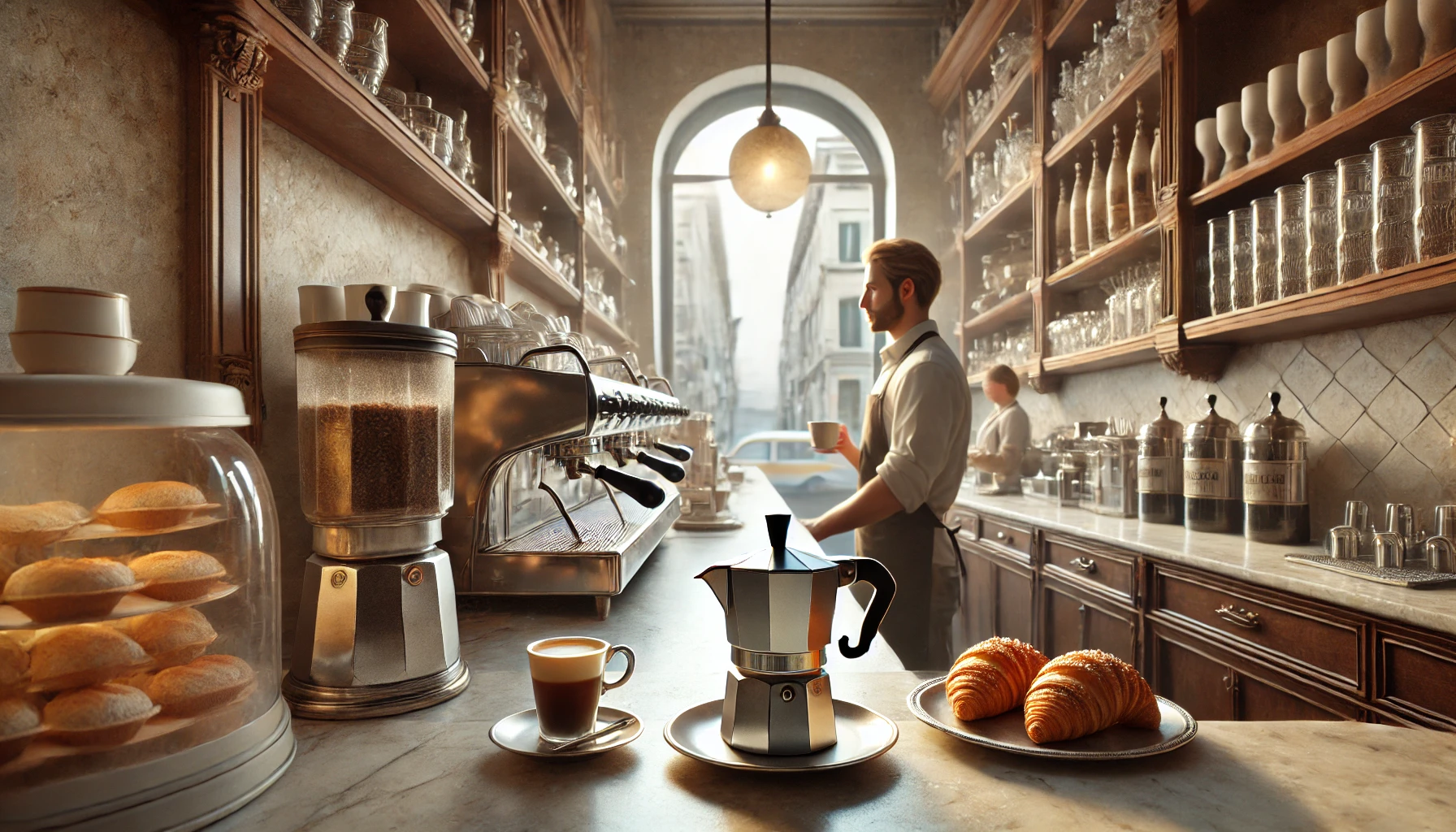Italy is often considered the spiritual home of espresso—and with good reason. In Italian culture, coffee is far more than just a caffeine boost. It’s a daily ritual, a social moment, and an expression of national pride. The way Italians drink, serve, and think about coffee is deeply rooted in tradition, with clear customs and even unspoken rules that guide the experience.
Whether you’re planning a trip to Italy or just want to bring some Italian flair to your coffee routine, this guide will help you understand how to drink coffee like an Italian—the real way.
The Heart of Italian Coffee: Espresso
Walk into any Italian bar (which is what they call cafés), and you’ll see a long counter, a busy barista, and small cups of espresso being prepared at lightning speed.
What is “Espresso” in Italy?
In Italy, espresso isn’t a style—it’s the default. If you order a “caffè”, you’ll get a single shot of espresso served in a small porcelain cup. There’s no need to say “espresso,” unless you’re ordering in another country.
- Size: 25–30 ml (a single shot)
- Time to drink: About 30–60 seconds
- Style: Often consumed standing at the bar
- Price: Very affordable, typically €1 to €1.50
Espresso in Italy is short, strong, and simple—served quickly, consumed quickly, and enjoyed often.
The Italian Coffee Schedule
In Italy, when you drink coffee is almost as important as how you drink it. There’s a cultural rhythm to coffee consumption throughout the day.
Morning: Cappuccino or Caffè Latte
In the morning, it’s common to drink:
- Cappuccino: Espresso with steamed milk and foam
- Caffè latte: More milk, less foam
- Caffè macchiato: Espresso “stained” with a small amount of milk
These milk-based coffees are almost never consumed after 11 a.m. Drinking milk in coffee later in the day is seen as heavy or odd—something only tourists tend to do.
Afternoon and Beyond: Straight Espresso
From midday onward, Italians switch to simpler drinks:
- Caffè (espresso)
- Caffè ristretto (shorter, more concentrated shot)
- Caffè lungo (longer extraction)
- Caffè corretto (espresso “corrected” with a splash of liquor)
These are typically enjoyed after meals, as a digestive aid or quick pick-me-up.
Standing vs. Sitting: A Cultural Choice
Many Italians drink their coffee standing at the bar, especially during work hours or quick breaks. It’s fast, cheap, and efficient.
- Standing: Cheaper, often around €1
- Sitting (especially outside): May cost more, particularly in tourist zones
Sitting for coffee is more leisurely, and often reserved for social or relaxed moments.
Sugar and Customization
In most Italian bars, espresso is served unsweetened, and sugar is available at the counter. You’re expected to add it yourself if you want it, but the default assumption is that you’ll drink it as is.
As for syrups, flavor shots, whipped cream, or extra-large cups? Those are generally not part of the Italian coffee experience.
No Coffee to Go
In Italy, coffee is meant to be enjoyed in the moment—not taken to go. While take-away coffee is becoming more common in larger cities, especially due to international influence, most locals still drink their coffee on the spot.
Disposable coffee cups are rare. The ritual is more important than the convenience.
Italian Coffee Machines and Home Rituals
At home, most Italians use a Moka pot to brew their coffee—especially in the morning. The Moka is a stovetop coffee maker that produces a strong, espresso-like drink.
- Served in small cups
- Typically paired with breakfast pastries or toast
- Brewing the Moka is a daily ritual passed down through generations
Espresso machines are less common in homes, as people prefer to enjoy professional espresso at the bar.
Coffee and Meals
Italians have a very specific idea about when coffee should and shouldn’t be consumed.
- With meals? Never. Coffee is served after a meal, not with it.
- With dessert? Usually after dessert, or sometimes with a sweet like biscotti.
- With milk? Only in the morning. Never after lunch or dinner.
Following these rules isn’t just about tradition—it’s about digestion, balance, and cultural identity.
Regional Coffee Specialties
While espresso dominates the country, some regions have unique traditions:
- Naples: Known for its rich, strong espresso and use of caffè sospeso (a suspended coffee paid for in advance for someone in need)
- Turin: Birthplace of Bicerin, a layered drink with espresso, chocolate, and cream
- Venice: Elegant café culture and historical ties to global coffee trade
- Trieste: Influenced by Austro-Hungarian traditions, with many coffee drink names unique to the region
Exploring coffee in Italy is also a journey through regional identity and history.
Final Thoughts: Coffee as Culture, Not Just a Drink
In Italy, coffee is more than a beverage—it’s a daily ritual, a social signal, and a symbol of national pride. From the strict schedule to the unspoken rules, everything about the Italian coffee experience is designed to celebrate quality, tradition, and simplicity.
So if you want to drink coffee like an Italian, remember: keep it short, strong, and intentional—and never order a cappuccino after lunch.
